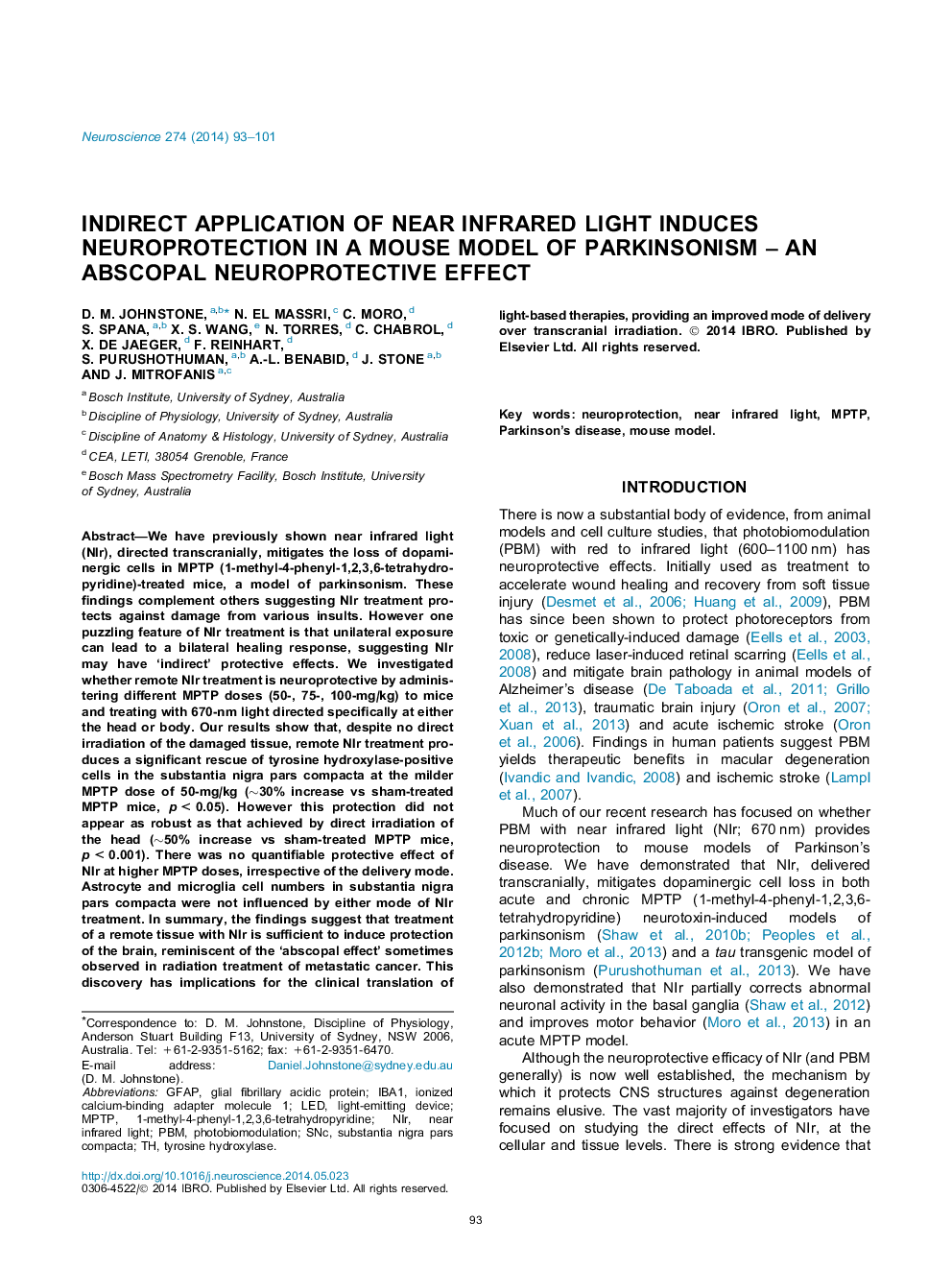| Article ID | Journal | Published Year | Pages | File Type |
|---|---|---|---|---|
| 4337633 | Neuroscience | 2014 | 9 Pages |
•Near infrared light (NIr), directed transcranially, is neuroprotective in rodent models of neurodegeneration.•We assessed the neuroprotective efficacy of remotely-applied NIr in an MPTP mouse model of parkinsonism.•As with transcranial NIr, remote NIr protects dopaminergic cells from damage due to mild MPTP doses.•The findings have important implications for the clinical translation of light-based therapies.
We have previously shown near infrared light (NIr), directed transcranially, mitigates the loss of dopaminergic cells in MPTP (1-methyl-4-phenyl-1,2,3,6-tetrahydropyridine)-treated mice, a model of parkinsonism. These findings complement others suggesting NIr treatment protects against damage from various insults. However one puzzling feature of NIr treatment is that unilateral exposure can lead to a bilateral healing response, suggesting NIr may have ‘indirect’ protective effects. We investigated whether remote NIr treatment is neuroprotective by administering different MPTP doses (50-, 75-, 100-mg/kg) to mice and treating with 670-nm light directed specifically at either the head or body. Our results show that, despite no direct irradiation of the damaged tissue, remote NIr treatment produces a significant rescue of tyrosine hydroxylase-positive cells in the substantia nigra pars compacta at the milder MPTP dose of 50-mg/kg (∼30% increase vs sham-treated MPTP mice, p < 0.05). However this protection did not appear as robust as that achieved by direct irradiation of the head (∼50% increase vs sham-treated MPTP mice, p < 0.001). There was no quantifiable protective effect of NIr at higher MPTP doses, irrespective of the delivery mode. Astrocyte and microglia cell numbers in substantia nigra pars compacta were not influenced by either mode of NIr treatment. In summary, the findings suggest that treatment of a remote tissue with NIr is sufficient to induce protection of the brain, reminiscent of the ‘abscopal effect’ sometimes observed in radiation treatment of metastatic cancer. This discovery has implications for the clinical translation of light-based therapies, providing an improved mode of delivery over transcranial irradiation.
